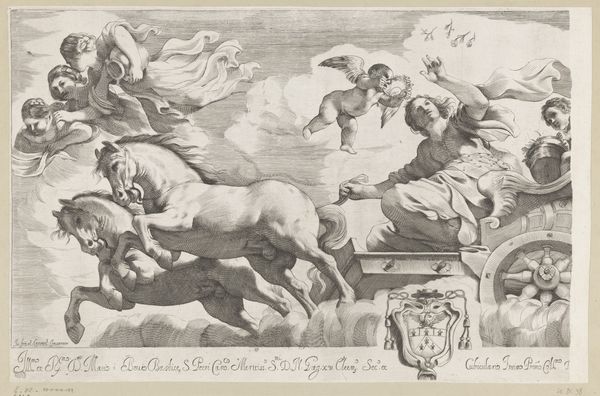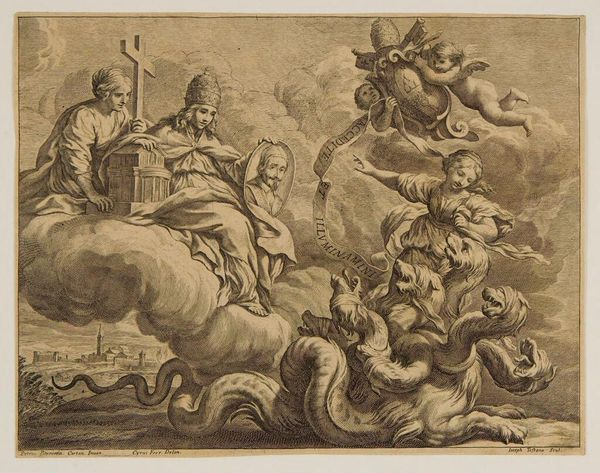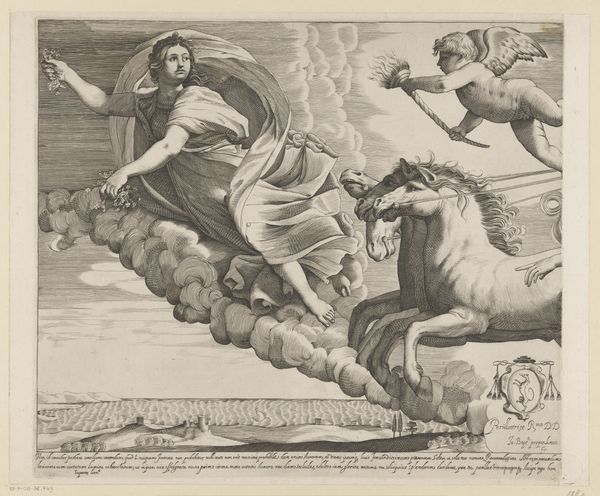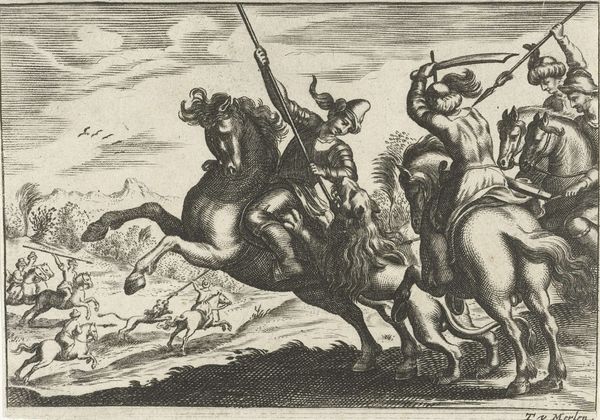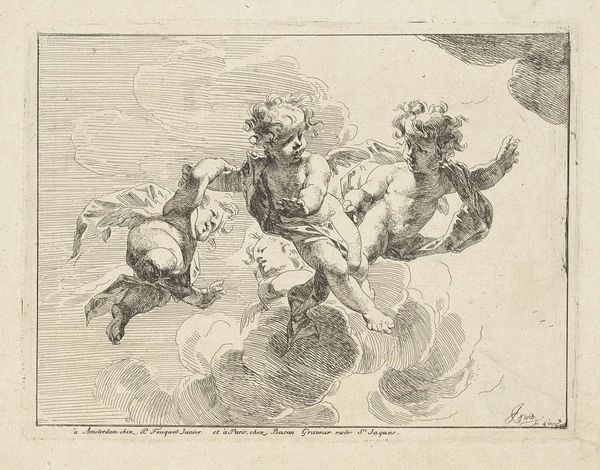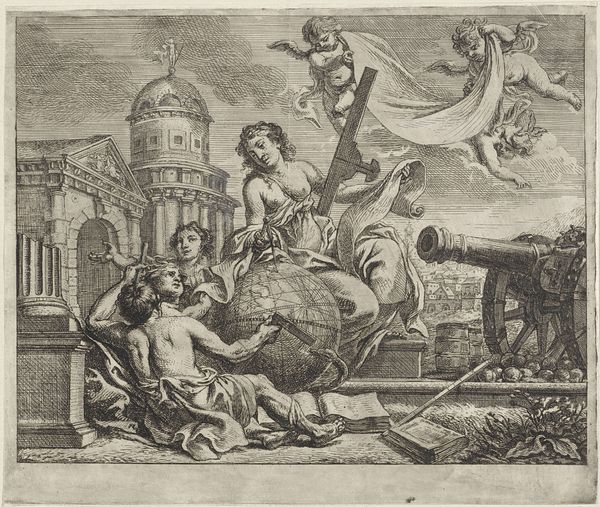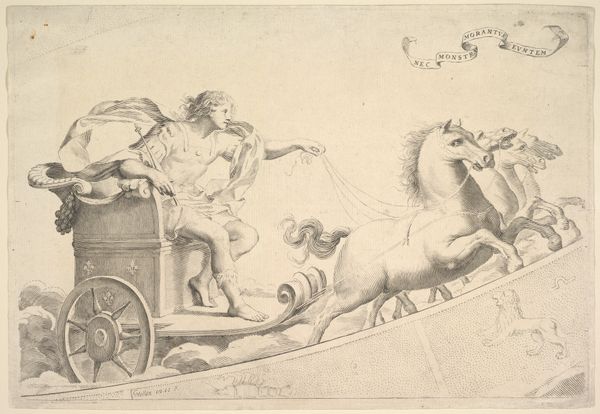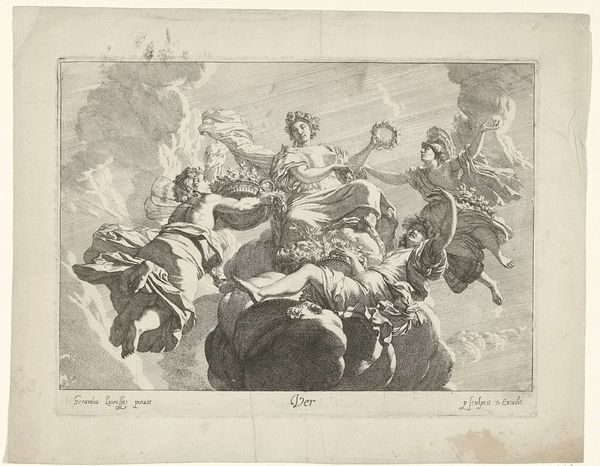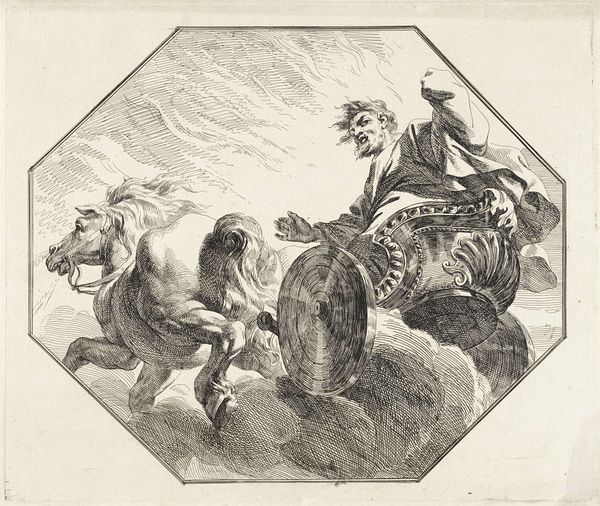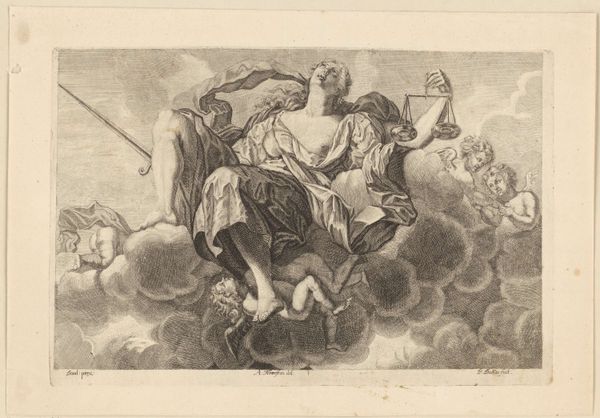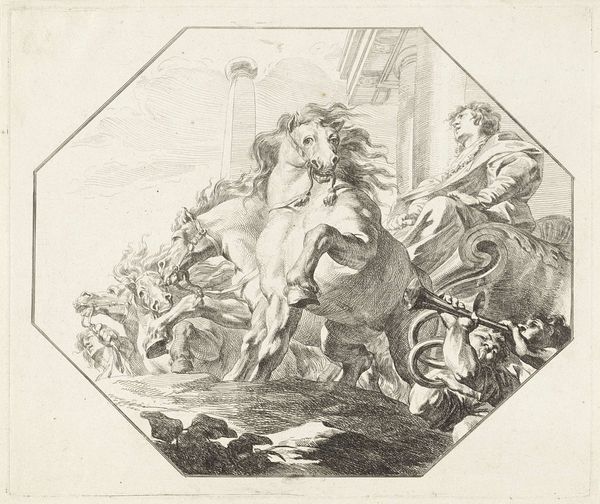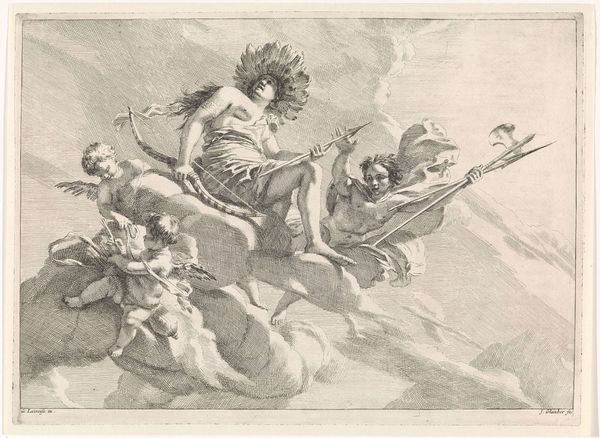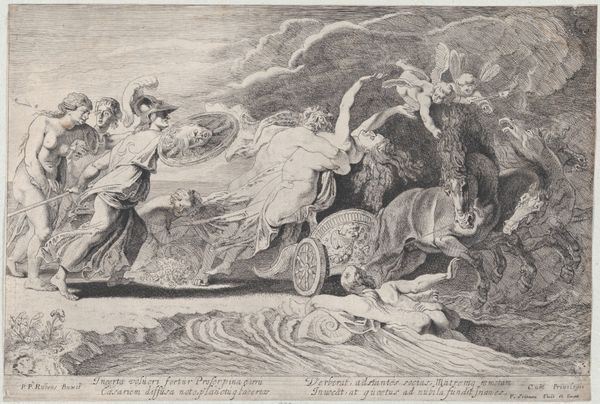
Copyright: CC0 1.0
Curator: This engraving is attributed to Giovanni Battista Pasqualini, a Roman artist active in the early 17th century. It's called "Aurora," depicting the Roman goddess of dawn. Editor: The upward thrust of the composition is quite striking. It's balanced by a sense of swirling movement in the clouds and figures. Curator: Absolutely. Pasqualini's Aurora isn't just about aesthetic beauty, but also reinforces classical mythology within the socio-political context of Rome at the time. It was a period of great artistic and architectural flourishing, supported by powerful patrons. Editor: The hatching and cross-hatching give a real sense of depth and volume. Look at the muscularity of those horses. It's all about light and shadow. Curator: Seeing this print in the Harvard Art Museums reminds us that art wasn't just passively received. Prints helped distribute ideas across Europe, playing a role in shaping cultural values. Editor: For me, it’s the dynamic energy, the bold contrasts of light and dark, that make the artwork so appealing. Curator: I'm left thinking about the power of art to embody cultural values. Editor: Yes, and how technical skill elevates the subject matter into something truly memorable.
Comments
No comments
Be the first to comment and join the conversation on the ultimate creative platform.
